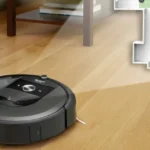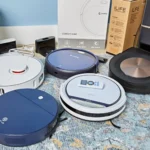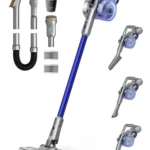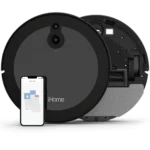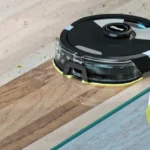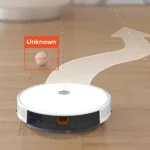As technology continues to revolutionize our lives, smart vacuum cleaners have become a popular household item. They make cleaning easier, faster, and more efficient. However, one issue that is often overlooked is the noise level of these machines. No one wants a vacuum that makes a deafening sound and disturbs the peace in their home. In recent years, researchers and manufacturers have been working hard to develop noise reduction solutions for smart vacuums. In this article, we will explore the various real-life examples of noise reduction in smart vacuum cleaners. We will dive into the different technologies and techniques used to reduce noise levels and make your cleaning experience more pleasant.
Advancements in Technology
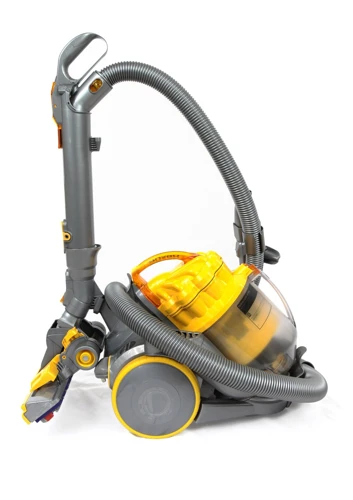
With the rapid development of technology in recent years, smart vacuum cleaners have become an essential household cleaning tool that provides convenience to its users. These intelligent devices have evolved significantly to provide more benefits than just efficient cleaning. However, some consumers struggle with the noise level produced by some of these devices. Fortunately, noise reduction technology, improved motor technology, and advanced filtration systems have been developed to cater to these customers’ concerns. Let’s take a closer look at how these advancements contribute to quiet smart vacuums for homes (source).
Noise Reduction Technology
One of the main complaints about traditional vacuum cleaners is their loud noise. Fortunately, manufacturers have been working on developing smart vacuum cleaners with varying levels of noise reduction technology.
Noise reduction technology is an important feature to consider for those who are sensitive to loud noises or who live in apartments or shared spaces where quiet cleaning is important. There are different technologies used to reduce the noise level of smart vacuum cleaners, including:
| Technology | Description |
|---|---|
| Acoustic insulation | This technique involves using materials, such as foam or rubber, to insulate the vacuum cleaner motor and other noisy components. This helps to absorb the sound vibrations produced and lower the overall noise level of the machine. |
| Noise-absorbing motor mounts | These mounts are designed to suspend the motor in the vacuum cleaner in a way that minimizes the noise produced. This helps to isolate the motor from the rest of the machine and reduce the overall noise level. |
| Noise reduction filters | These specialized filters are designed to reduce the noise produced by the vacuum cleaner as air flows through it. They’re usually made of layers of foam and/or felt and can help to reduce the overall noise level while still providing effective filtration. |
There are also smart vacuum cleaners that use noise-reducing technology to stay quiet. These vacuum cleaners adjust their cleaning level automatically depending on the type of surface they are cleaning. If the unit detects carpeting or uneven floor surfaces, it ramps up suction and noise levels. On smooth flooring, it may reduce suction and noise levels to save energy and prevent damage to flooring materials.
Noise reduction technology in smart vacuum cleaners has a number of benefits for consumers. It makes cleaning an easier and quieter process, which is especially useful for those who want to clean during quiet hours. Additionally, some people may find that they’re able to clean more frequently and for longer periods of time without feeling overwhelmed by the noise level.
Smart vacuum cleaners with noise reduction technology also have an eco-friendly aspect. They use less power, meaning that their operating costs are lower and they’re better for the environment.
If you’re in the market for a new vacuum cleaner, it’s important to look for noise reduction technology. This feature is becoming increasingly common in smart vacuum cleaners, and it can make all the difference in the world when it comes to a quiet and peaceful cleaning experience. For more information on the benefits of noise-reducing vacuum cleaners, check out “Benefits of Noise-Reducing Vacuum Cleaners”.
Improved Motor Technology
Smart vacuum cleaners have undergone numerous technological advancements in the past few years. One of the significant innovations in smart vacuum technology is improved motor technology. Below are some of the real-life examples of improved motor technologies in smart vacuum cleaners:
- Brushless Motors: Smart vacuums equipped with brushless motors have significantly reduced noise levels as these motors don’t require brushes to operate, which is a common source of motor noise. With this technology, smart vacuums can run more smoothly and silently than traditional vacuum cleaners.
- Electric Digital Motors: Smart vacuums with electric digital motors have higher efficiency and lower noise levels than other motor types. These motors are quieter and provide better suction power than traditional motor types.
- Cyclonic Motor Technology: Cyclonic technology used in smart vacuums promotes airflow and helps separate dust particles from the air, resulting in a more efficient cleaning process. Additionally, this technology can produce better suction power while keeping sound levels low.
- Powerful Suction Motors: Smart vacuum cleaners that utilize powerful suction motors are capable of removing even the smallest dirt particles. With this technology, smart vacuums can clean almost all surfaces with ease, including carpets, hardwood floors, and tiles. These powerful motors ensure a shorter cleaning time, allowing the smart vacuum to work efficiently, quietly, and effectively.
Smart vacuums are no longer just about cleaning faster and more efficiently. The advent of improved motor technology has made noise reduction in smart vacuum cleaners possible, making them more suitable for use in a wide range of settings. With smart vacuums, you can now clean your home with minimal disruption or noise. Besides, the upgrade in motor technology also makes eco-friendly and energy-saving smart vacuums possible, reducing environmental impact while running in the background. If you own pets, you can choose a noise-reducing vacuum cleaner that will help clean pet hairs with minimum noise and disturbance. The benefits of improved motor technology in smart vacuum cleaners are numerous, and it’s time to embrace it!
Improved motor technology has made smart vacuums quieter, more efficient, and powerful. With the advancement in motor technology, smart vacuum cleaners are becoming a household essential that offers convenience, tidiness, and peace of mind.
Smart Navigation and Mapping
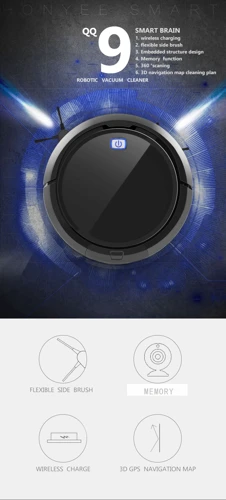
With the advancements in smart technology, the navigation and mapping capabilities of modern robotic vacuum cleaners have come a long way. The days of randomly bouncing around a room, getting stuck, and missing spots are over.
Smart navigation and mapping technologies allow robotic vacuum cleaners to accurately and efficiently navigate around a room, avoiding obstacles and cleaning every nook and cranny. These technologies include a variety of sensors, such as cameras, laser sensors, and infrared sensors, that help the vacuum cleaner to create a map of the room and determine the best cleaning path.
One of the most notable advancements in smart navigation and mapping technology has been the ability for robotic vacuum cleaners to connect to WiFi networks and be controlled through a smartphone app. This allows users to schedule cleaning times and even control the vacuum remotely.
In addition to improving efficiency and convenience, smart navigation and mapping technologies have also led to a reduction in noise levels. By utilizing sensors to detect obstacles and plan the most efficient cleaning paths, robotic vacuum cleaners can avoid repeatedly bumping into walls and furniture, which can create a lot of noise.
As a result, modern robotic vacuum cleaners are able to operate at much lower noise levels than their predecessors. This is especially significant for those who like to run their vacuum at night or in the early morning without disturbing sleeping family members or neighbors.
Smart navigation and mapping technologies are an important factor in noise reduction in smart vacuum cleaners. By enabling efficient and quiet cleaning, these technologies have vastly improved the user experience. If you want to learn more about different noise reduction technologies in smart vacuum cleaners, don’t hesitate to check our article about it here.
Advanced Filtration Systems
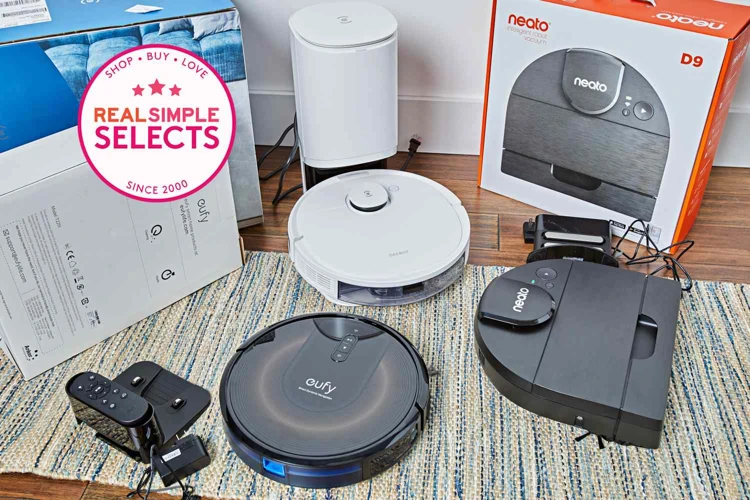
When it comes to smart vacuum cleaners, one of the most vital components is the filtration system. A high-quality filtration system allows the vacuum to capture even the smallest allergens and dust particles, thereby improving indoor air quality. With advancements in technology, smart vacuum cleaners come equipped with advanced filtration systems that significantly reduce noise while keeping indoor air clean.
HEPA Filters: One of the most common types of advanced filtration systems in smart vacuums is the High-Efficiency Particulate Air (HEPA) filter. These filters capture almost 100% of small particles as small as 0.3 microns, ensuring that all allergens, pollen, and other harmful particles are contained before exhausted air is released back into the room. This technology results in better indoor air quality and reduces the risk of respiratory illnesses.
Cyclonic Filtration Systems: Another advanced filtration system in smart vacuums is the cyclonic filtration system. This technology utilizes high-speed spinning to separate fine dirt particles from the rest of the debris, ensuring that only clean air is released back into the room. This filtration method not only reduces noise but also helps to maintain the suction power of the vacuum cleaner, making it more efficient overall.
Mesh Filters: A popular type of filtration system in smart vacuums is the mesh filter. This filter is made from a fine mesh material that captures tiny particles as small as a few microns. Mesh filters are commonly used in conjunction with HEPA filters to create a dual-filtration system. This system ensures that even the tiniest airborne pollutants are trapped, making the indoor air quality significantly better.
Smart vacuums with advanced filtration systems work quietly and efficiently, making them the perfect choice for homeowners looking for a cleaner indoor air environment without any distracting noise. With multiple filtration layers, including HEPA and mesh filters and cyclonic filtration systems, smart vacuums are engineered to perform at the highest level while ensuring that the environment is clean and healthy.
Low Noise Brushes and Rollers
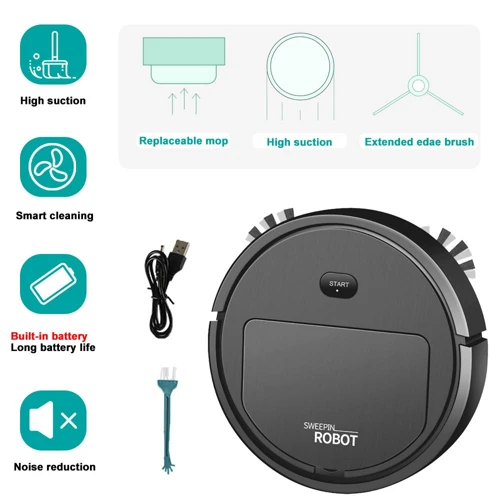
One of the main sources of noise in traditional vacuum cleaners is the sound created by the brushes and rollers as they come into contact with the cleaning surface. However, with advancements in technology, the smart vacuum cleaner industry has introduced low noise brushes and rollers that reduce the amount of noise produced during operation.
These brushes and rollers are made with special materials and textures. For example, some of them are made with soft and dense bristles that can pick up dirt without creating loud noises. Additionally, some rollers are designed with ribs that make them quieter when they come into contact with hard surfaces.
The design of the brushes and rollers has been improved to reduce the amount of vibration during operation, which in turn reduces noise levels. This is achieved through the use of precision-balanced rollers that rotate smoothly and quietly.
In addition to reducing noise, low noise brushes and rollers offer other benefits. For example, they are less likely to damage delicate surfaces such as hardwood floors, and they are highly effective at removing pet hair and other types of debris. The reduction of noise also means that users can operate the vacuum cleaner without disturbing other people or pets at home.
It is worth noting that not all smart vacuum cleaners come with low noise brushes and rollers. It is important to do some research before purchasing one to ensure that it includes this feature if noise is a significant concern. Nonetheless, the availability of low noise brushes and rollers is a step in the right direction for those who value the benefits of quieter cleaning equipment.
Improved Design and Material Selection
Smart vacuum cleaners are becoming much more effective and efficient thanks to improvements in design and material selection. Manufacturers are constantly striving to produce vacuum cleaners with sleek, modern designs that provide high-performance cleaning without compromising on the aesthetic appeal of the product.
One way manufacturers are doing this is by using high-quality materials that not only enhance the look of the vacuum cleaner but also dramatically reduce the amount of noise produced while in operation. This is achieved by incorporating materials such as sound-absorbing foam or acoustic insulation into the design of the vacuum cleaner. These materials work to block out sound waves and prevent them from moving through the case, ultimately leading to a quieter cleaning experience.
Additionally, manufacturers are adopting advanced design techniques that further contribute to noise reduction in smart vacuums. For example, some smart vacuums have a curved suction inlet design that helps to reduce airflow noise by up to 40%. This means that users can enjoy significantly quieter cleaning sessions without having to sacrifice the high cleaning performance they expect from their vacuum cleaners.
Manufacturers are also paying close attention to the structural design of the vacuum cleaner. They are making improvements to the layout of parts, as well as the shape and size of the motor, to minimize vibrations and reduce noise. Noise reducing features like soft-start motors, which gradually ramp up the motor speed rather than starting suddenly, are also becoming more common in smart vacuum cleaners.
Improved design and material selection are undoubtedly important factors in reducing the noise produced by smart vacuum cleaners. With the use of high-quality materials, advanced design techniques, and noise-reducing features, manufacturers are producing vacuum cleaners that offer remarkable performance, enhanced durability, and a greatly decreased noise level. This makes it easier than ever to keep a clean, uncluttered home without having to put up with the annoying sound of a loud vacuum cleaner.
Conclusion
In conclusion, it is safe to say that noise reduction technology has come a long way in smart vacuum cleaners. With advancements in motor technology, smart navigation and mapping, advanced filtration systems, low noise brushes and rollers, and improved design and material selection, manufacturers have been able to dramatically reduce the noise levels without compromising on the cleaning performance.
Nowadays, smart vacuum cleaners are equipped with high-quality sound insulation materials, noise-reducing brushes, and improved motor technology that make them incredibly quiet during operation.
Furthermore, with the rise of artificial intelligence and machine learning, smart vacuum cleaners now have the ability to learn and adapt to their surroundings, choosing the most efficient cleaning path while minimizing noise levels.
In addition, advanced filtration systems have allowed for the removal of even the smallest particles of dust and allergens, resulting in a cleaner and healthier home environment for customers.
Overall, the advancements in noise reduction technology have not only made smart vacuum cleaners quieter but also more efficient and effective in cleaning, with a focus on creating a comfortable and healthy living space for users. With further advancements in technology, it is exciting to think about what the future has in store for smart vacuum cleaners and their noise reduction capabilities.
Frequently Asked Questions
What is noise reduction technology in smart vacuum cleaners?
Noise reduction technology is a feature in smart vacuum cleaners that reduces the amount of noise produced while cleaning, making vacuuming less disruptive.
How does noise reduction technology work?
Noise reduction technology works by using advanced sound-dampening materials and techniques to make the vacuum cleaner quieter while maintaining the same level of suction power.
What are the benefits of noise reduction technology in vacuum cleaners?
The benefits of noise reduction technology in vacuum cleaners include reduced disturbance to people and pets in the household, improved concentration during use, and lower stress levels for the user.
Can noise reduction technology affect the suction power of a vacuum cleaner?
No, noise reduction technology is designed to reduce noise levels without compromising the suction power of the vacuum cleaner.
What is smart navigation and mapping in smart vacuum cleaners?
Smart navigation and mapping is a feature in smart vacuum cleaners that uses sensors and software to create a map of the area being cleaned and determine an efficient cleaning path.
How does smart navigation and mapping improve the vacuuming process?
Smart navigation and mapping helps the vacuum cleaner to clean more efficiently, reducing cleaning time and making sure all areas are covered.
What are advanced filtration systems in smart vacuum cleaners?
Advanced filtration systems in vacuum cleaners use HEPA filters or other high-quality filters to capture fine particles, such as pet dander and dust, ensuring clean air after vacuuming.
What are low noise brushes and rollers in smart vacuum cleaners?
Low noise brushes and rollers are designed to produce less noise during vacuuming while maintaining the same level of cleaning performance.
How does improved design and material selection affect the noise level of vacuum cleaners?
Improved design and material selection can help to reduce noise levels in vacuum cleaners by using sound-absorbing materials, optimizing airflow, and reducing vibration.
Why should I consider a smart vacuum cleaner with noise reduction technology?
A smart vacuum cleaner with noise reduction technology can help to create a quieter and more relaxing living environment, reducing stress levels and improving wellbeing for everyone in the household.


